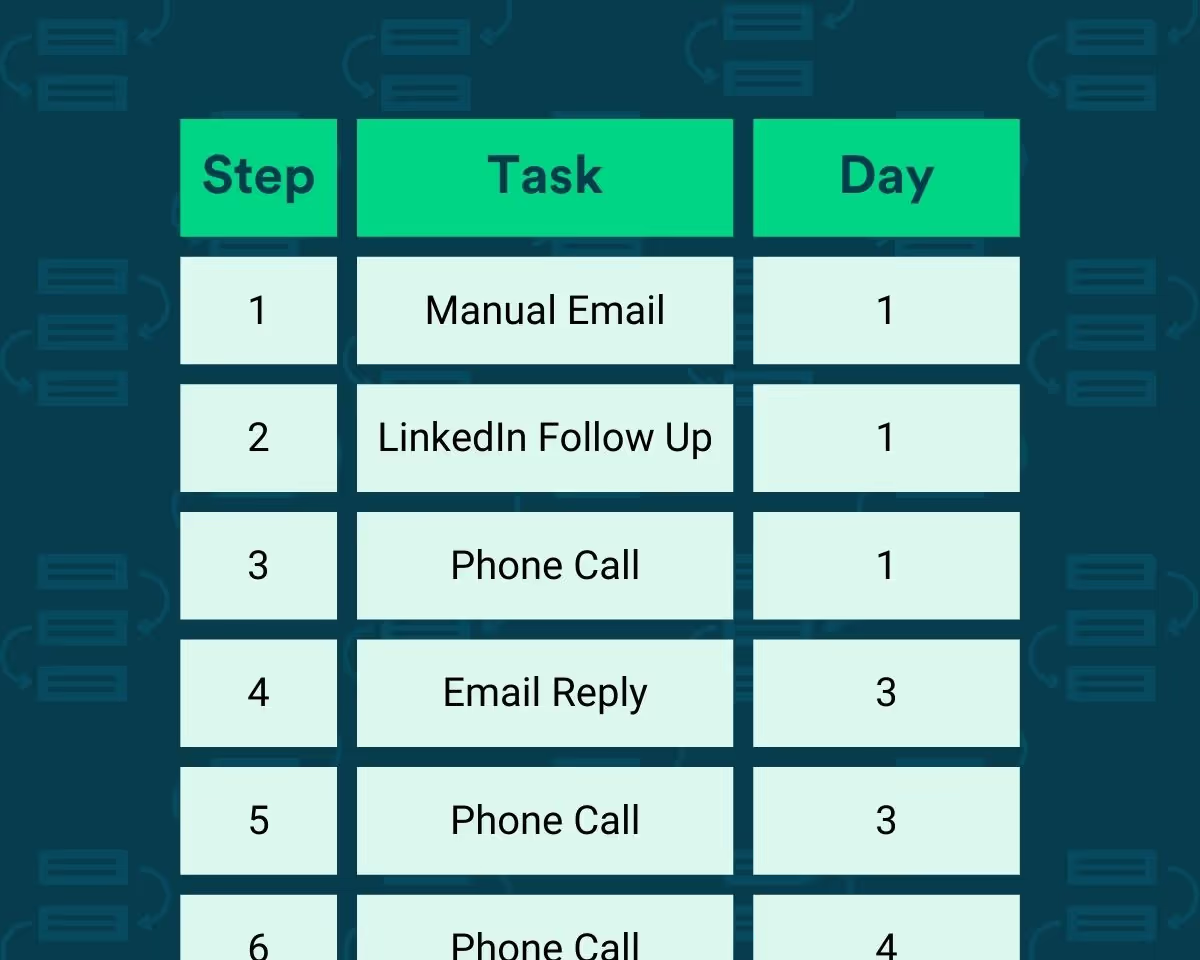Ready to create more pipeline?
Get a demo and discover why thousands of SDR and Sales teams trust LeadIQ to help them build pipeline confidently.



The ideal length of an outbound sales sequence depends on factors like industry standards, product complexity, and the target audience

Regularly experiment with different sequence variations and analyze performance metrics to determine the most effective approach for your sales process.

Successful sales sequences strike the right balance between persistence and respecting the prospect's time, avoiding overwhelming or alienating potential customers.
Get a demo and discover why thousands of SDR and Sales teams trust LeadIQ to help them build pipeline confidently.
In the fast-moving world of B2B SaaS sales, outbound email sequences have emerged as a powerful tool to engage prospects and drive conversions.
That said, crafting the perfect sales cadence is a nuanced art form that can significantly impact your success — or your lack thereof. Message a prospect too frequently, and you’ll likely turn them away. Message them too infrequently, and you’ll never be top of mind.
Sales success starts with striking the right balance between the two extremes. Keep reading to learn more about what you need to consider when building an outbound sales sequence, strategies for engaging both cold and unresponsive leads, and why you need to balance persistence with respect for the prospect’s time.
The best outreach sequences are carefully orchestrated, with a series of touchpoints sent across multiple channels designed to engage prospects and swiftly guide them through the sales funnel.
Crafting an optimal cadence starts with understanding your target audience, products, and sales goals. The length of the ideal cadence can vary depending on your industry, product complexity, and who you’re selling to.
For example, a SaaS salesperson catering to small businesses might be best off with a streamlined approach that includes five touchpoints (e.g., email, LinkedIn connection, demo video, follow-up email, phone call). This is enough time to engage prospects, deliver value, and book meetings without overwhelming potential customers.
On the other hand, someone selling enterprise-grade IT infrastructure — or any product that involves complex decision-making processes with multiple stakeholders — might take a more thorough approach that includes as many as 30 touchpoints. Buyers of these solutions typically require more nurturing and education because they’re making major decisions and spending tons of cash. This longer approach can help sales teams establish trust, educate prospects, and build strong relationships throughout the process, increasing the chances of conversion.
As you begin developing your outbound B2B sales sequence, here are some factors to keep in mind to guide your planning process:
A/B testing plays an invaluable role in refining outbound sales sequences and converting prospects. By creating multiple cadence variations and measuring their performance over time, you can get a better idea of what the most effective approach is.
Experiment with different touchpoint intervals, messaging styles and elements, and communication channels. Keep track of key metrics — like open rates, response rates, click-through rates, conversion rates, and overall sales outcomes — to see which approach works best.
Pay attention to the data you collect and use it to inform the way forward. In some instances, a shorter, more focused sequence might deliver the results you’re looking for. Other times, a longer sequence might be the key.
Instead of thinking you know best, let the data think for you. Continuously analyze the results of your experiments and iterate on your approach. Soon enough, you’ll zero in on the most effective cadence for your unique audience and products.
Ideally, you’d fire off emails and every prospect would engage. In the world of outbound SaaS sales, however, dealing with cold and unresponsive leads comes with the territory.
Just because someone might be ignoring your messaging doesn’t mean you should stop engaging them altogether. Using the following tactics, you may be able to re-engage them — and ultimately win their business:
The best salespeople are persistent. But they also respect each prospect’s time and boundaries. When you bombard prospects with message after message relentlessly, you do more harm than good, making your job much more difficult than it needs to be. You’ve got goals to meet, and damaging your brand’s reputation won’t help you get there.
Even the world’s most talented salesperson can’t convince every single individual on the planet to buy their products. Sometimes, you need to take your foot off the accelerator and give your prospects some space to think and breathe.
As you begin crafting your outbound sales sequence, remember that there isn’t a formula to follow that ensures success. Every company, product, and prospect is different, and what works on one prospect might not work on someone else.
By experimenting, iterating, and letting data help you find the best way forward, you can strike the perfect balance between persistence and respect — leading to stronger connections, increased conversions, and long-term sales success.
This is the fourth post in a five-part series; read the first, second, and third installments. Up next, we’ll conclude our series with a look at what you can do to measure outbound sequence success.